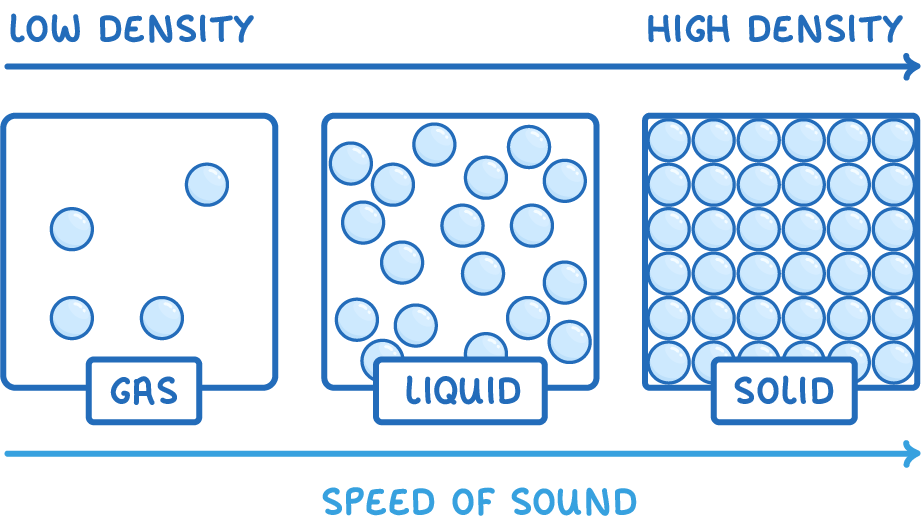Sound
This lesson covers:
- The properties of longitudinal waves
- How sound travels through a medium
- Reflection and absorption of sound
- Factors affecting the speed of sound
- Frequency as a measure of sound pitch
Sound is a longitudinal wave

Longitudinal waves have vibrations that are parallel to the direction of wave travel.
Examples of longitudinal waves include sound waves and slinky springs when they are compressed and released.
Sound is a pressure wave

- Sound is generated by vibrating particles.
- It requires a medium like air or water to travel through, as it is the movement of the particles that transmits the vibrations.
- The vibrations pass through the medium as alternating compressions and rarefactions.
- Sound cannot travel through a vacuum because there are no particles to transmit variations.
Reflection and absorption of sound
Like light waves, sound waves can be reflected and absorbed.

- Some materials reflect sound waves, producing echoes.
- Soft materials like carpet, can absorb and dissipate sound energy.
Factors affecting the speed of sound

- More dense media transmit sound faster because particles are closer together.
- Generally, sound travels fastest in solids, slower in liquids, and slowest in gases.
Frequency and pitch

- Frequency measures how many waves pass a point per second.
- High frequencies correspond to high-pitched sounds.
- Low frequencies correspond to low-pitched sounds.
- Frequency is measured in Hertz (Hz).